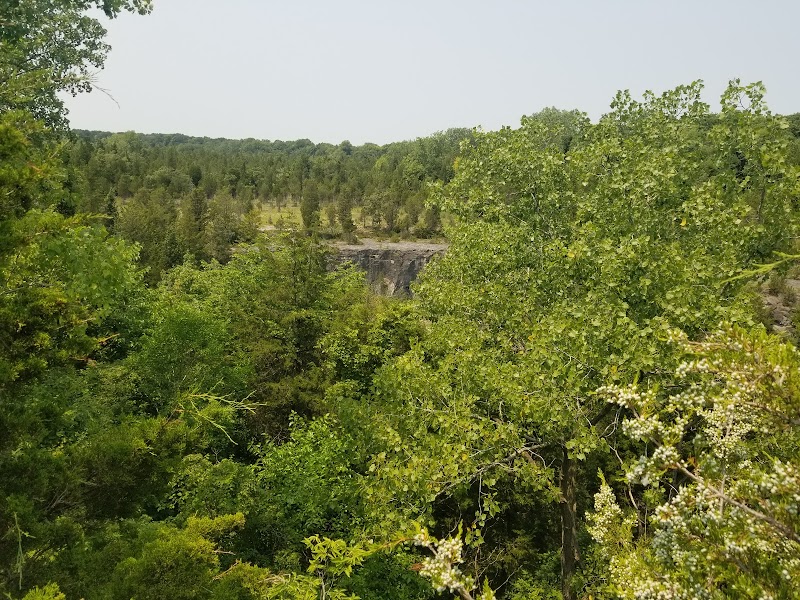
Discovering Wings and Water: The Detroit River Birding Festival in Trenton, Michigan
Experience spring’s arrival at the Detroit River Birding Festival in Trenton, Michigan, where migrating birds transform riversides into a vibrant wildlife hub. This accessible festival offers birders and nature lovers practical trails, guided tours, and prime observation points to witness avian spectacle along one of North America’s busiest flyways.
Start Early for Peak Bird Activity
Birds are most active in the early morning hours; plan your visit before 10 a.m. to catch the greatest variety and number of species.
Bring Waterproof Footwear
Trails near wetlands and riverbanks can be wet and muddy, especially after rain; waterproof shoes or boots help keep you dry and comfortable.
Hydrate and Protect from Sun
Carry water and wear sun protection, including a hat and sunscreen, to guard against dehydration and sunburn during long walks.
Use Binoculars and Field Guides
Bring binoculars and a bird identification guide or app to enhance spotting and learning opportunities during the festival hikes and tours.
Discovering Wings and Water: The Detroit River Birding Festival in Trenton, Michigan
Every spring, Trenton, Michigan, awakens with a flutter of feathers and the rush of the Detroit River carving its path nearby. The Detroit River Birding Festival invites enthusiasts of all levels to engage with a landscape where water dares the wind to carry the calls of migratory birds. This festival offers more than just observation; it’s a chance to navigate riverfront parks, wetlands, and marshes that hum with life.
Located along one of North America’s key migratory flyways, the festival unfolds over several days in spring, when warblers, hawks, and waterfowl surge in numbers. The terrain is approachable: mostly flat paths and boardwalks that range from short loops of under a mile to longer walking routes stretching up to three miles. The elevation gain is minimal, which means the focus remains on the birds and the landscape rather than steep climbs.
Spectators tread lightly over well-maintained trails weaving through cattails and willows, while the Detroit River’s current challenges the banks with restless tides. You’ll find observation decks and guided tours that sharpen the eye for identifying species, while photo stations encourage capturing moments where wings catch the morning sunlight. The wooded areas offer shade against the spring sun, and the breeze off the river carries the scent of fresh water and earth.
Preparation can make your experience more rewarding: bring binoculars and a field guide, wear sturdy but comfortable footwear suitable for wet or uneven patches, and pack hydration to stay energized through several hours of exploration. Early morning visits maximize bird activity, while afternoons can bring warmer temperatures and livelier waterfowl behavior. Whether you’re a first-timer or a seasoned birder, the environment holds challenges to read the signs of nature and respect its unpredictability.
The Detroit River Birding Festival does more than celebrate feathered visitors—it encourages an active dialogue with nature that remains fiercely alive each spring. From the whispering reeds to the darting osprey, this event merges practical adventure with an immersive natural classroom, inviting you on foot into the subtle drama of migration and survival.
Nearby Trips
All Adventures
Boat Charters
Water Activities
Adventures near Trenton, Michigan
Discover the unique and memorable adventures that make Trenton, Michigan special.
Frequently Asked Questions
What types of birds are most commonly seen during the festival?
The festival highlights a variety of species including migratory warblers, hawks, waterfowl such as ducks and geese, and northern harriers. Raptors often soar along the river corridor, while songbirds fill the woodlands.
Are the birding trails accessible for families and casual hikers?
Yes, the trails are mostly flat and include paved boardwalk sections suitable for families, casual walkers, and those with limited mobility. Some routes vary in length to accommodate different endurance levels.
Are guides available to help identify birds during the event?
Yes, the festival features experienced birding guides who lead group walks and educational talks, making it beginner-friendly while still engaging for seasoned birders.
What should I bring to the festival for the best experience?
Bring binoculars, a field guide or birding app, sturdy waterproof shoes, sun protection, insect repellent in warmer months, and water. Dress in layers to adjust to changing weather.
Can I take photographs during the festival? Any restrictions?
Photography is encouraged, especially from observation decks and designated quiet spots. To protect wildlife, flash photography and disturbance of birds or nests are prohibited.
Is parking and public transportation available near the festival sites?
Parking is available in designated lots near the main festival areas. Some public transport options connect Detroit and Trenton, but having a car is recommended for convenience.
Recommended Gear
Binoculars
Essential for spotting birds at a distance and enhancing your observation experience.
Waterproof Hiking Shoes
Protect your feet from muddy or wet trail conditions near riverbanks and wetlands.
Sun Protection (hat, sunscreen)
Necessary during sunlit hikes to prevent sunburn and heat-related issues.
Reusable Water Bottle
Stay hydrated during your birding excursion, especially in warmer weather.
Local Insights
Hidden Gems
- "Marshlands on Elizabeth Park – a quieter spot for spotting rare shorebirds"
- "Hennepin Marsh Boardwalk – offers close encounters with wetlands flora and fauna"
Wildlife
- "Osprey and Bald Eagles nesting near the river in spring"
- "Beavers industriously shaping the wetlands"
- "River otters occasionally seen swimming with ease against currents"
History
"Trenton and the Detroit River area have hosted migratory birds and indigenous peoples for centuries. The festival fosters awareness around preserving an ecologically critical corridor shaped by industrial and conservation histories."
